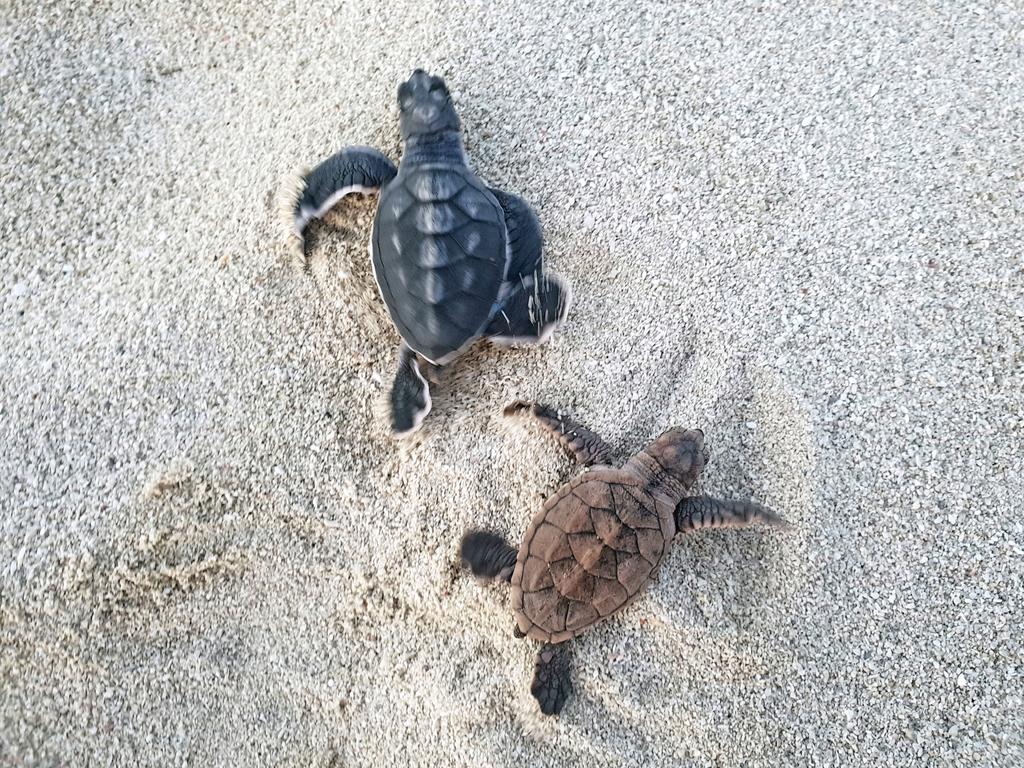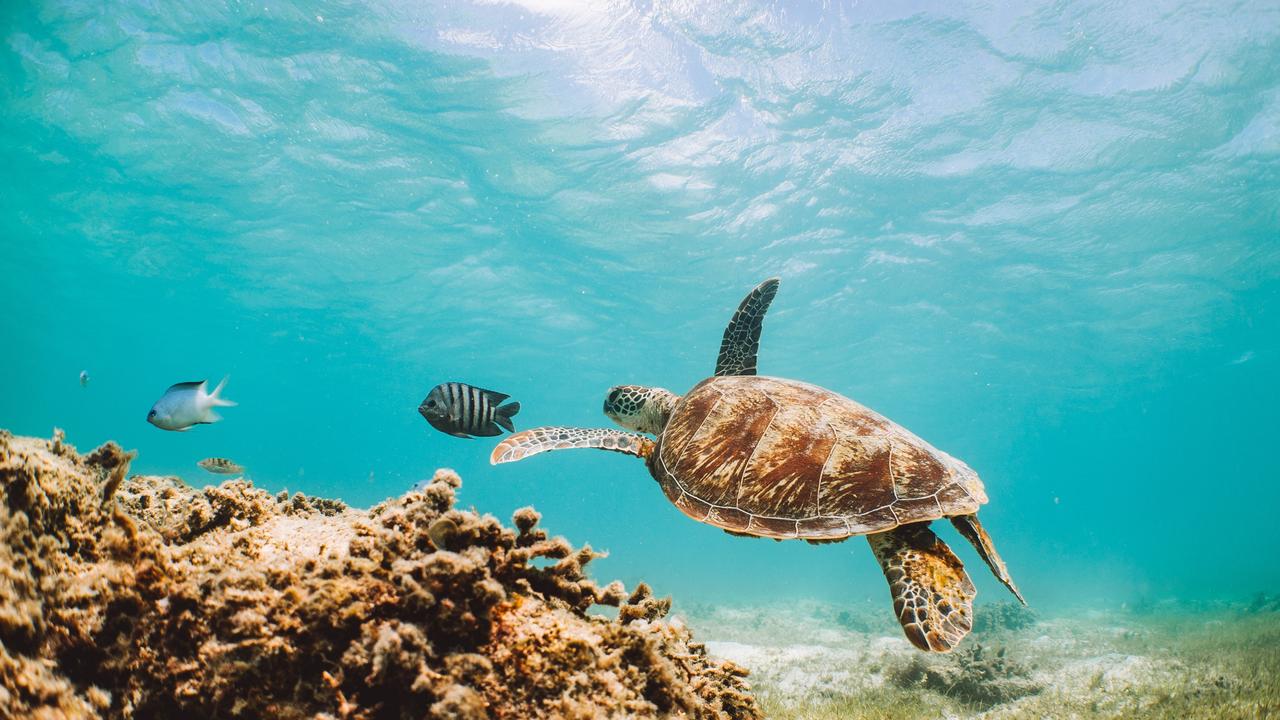Plastics a major danger to our green and loggerhead turtles
A worrying new study has found that the vast majority of turtles found off the east and west coasts of Australia have swallowed plastics – with juveniles most at risk

READING LEVEL: GREEN
Most turtles caught off the coast of Queensland had swallowed plastic, a concerning new study shows.
Around 83 per cent of green turtles and 86 per cent of loggerhead turtles found off the coast of Queensland were found to have ingested* plastics.
James Cook University Professor Mark Hamann contributed to the study, published in the journal Frontiers in Marine Science, that saw researchers examine the contents of the stomach, intestines, cloaca* and bladder of stranded or bycaught* turtles from the Indian Ocean off Western Australia and the Pacific Ocean off Eastern Australia.
Plastic ingestion rates among turtles were generally higher in the Pacific Ocean off the coast of Queensland than in the Indian Ocean off the coast of WA.
Professor Hamann said plastic pollution had become one of the most immediate threats to marine wildlife.
“It’s estimated that more than 700 marine species, from blue whales to small barnacles, have had interactions with plastics in the oceans,” he said.
Plastics make up 80 per cent of all marine debris and can be found everywhere, from surface waters to deep-sea sediments*.
“Plastic ingestion and entanglement*, which can cause suffocation*, has now been documented for every species of marine turtle,” Professor Hamann said.

“Small juvenile turtles are thought to be most at risk, as this life stage is most prone to entanglement and ingestion due to their feeding preferences, while the oceanic zones they inhabit overlap with areas of high plastic pollution.”
Swallowing plastic can be fatal for turtles through tearing, blocking, or puncturing of the gastrointestinal tract*.
It is also believed to lead to malnutrition* and chemical contamination*.
Professor Hamann said one turtle found in the Indian Ocean contained 343 pieces of plastic, and one animal in the Pacific Ocean contained 144.

Lead author of the study Dr Emily Duncan of the University of Exeter said the types of plastic also varied between the two study sites.
“Plastic in the Pacific turtles was mostly hard fragments, which could come from a vast range of products used by humans, while Indian Ocean plastics were mostly fibres – possibly from fishing ropes or nets,” she said.
Dr Duncan said action was needed to stop plastic pollution.
“The polymers most commonly ingested by turtles in both oceans were Polyethylene and polypropylene,” she said.
“These polymers are so widely used in plastic products that it’s impossible to pin down the likely sources of the fragments we found, so interventions are needed to stop plastic pollution from land-based sources.”
GLOSSARY
- ingested: taken into the body, eaten, swallowed, absorbed
- cloaca: pelvic opening for faeces, urine and reproduction in many vertebrates
- bycaught: from “bycatch”, the portion of a commercial catch that is caught unintentionally
- sediments: dregs, the matter that settles at the bottom of liquid
- entanglement: mixed up, knotted, caught up
- suffocation: being unable to breathe, being denied air
- fatal: deadly, causing or being able to cause death
- gastrointestinal tract: bodily path by which food enters the body and solid wastes leave it
- malnutrition: lack of good nutrition, not eating enough or enough of the right things
- contamination: process of becoming impure by pollution or poison
EXTRA READING
Hi-tech fake eggs helping solve sea turtle crime
Sea turtles thrive as humans stay off our beaches
Plastic waste found in seafood
Students test sea rubbish removal with robots
QUICK QUIZ
- What percentage of loggerhead turtles had ingested plastics off the Queensland coast?
- Which turtles are thought to be most at risk and why?
- How many marine species are estimated to have interacted with plastics?
- One turtle off the Indian Ocean was found containing how many pieces of plastic?
- What kind of plastic was more commonly found in the Pacific Island turtles?
LISTEN TO THIS STORY
CLASSROOM ACTIVITIES
1. Plastic reduction
Divide a sheet of paper into two columns. Work with a classmate and come up with five big ideas for reducing the plastic waste polluting our oceans. Make the heading of the first column ‘Ways to reduce plastic waste’ and write out your plan, and in the second column, under the heading ‘How to implement this action’ write beside each corresponding idea how you would begin to implement this plan if you were in government.
Time: allow 25 minutes to complete this activity
Curriculum Links: English, Personal and Social, Critical and Creative Thinking
2. Extension
What could explain the reason why there was more plastic pollution found in the ocean off the coast of Queensland than in the ocean off the coast of Western Australia?
Time: allow 10 minutes to complete this activity
Curriculum Links: English, Science, Critical and Creative Thinking
VCOP ACTIVITY
Stretch your sentence
Find a ‘who’ in the article - a person or animal. Write it down. Add three adjectives to describe them better.
Now add a verb to your list. What are they doing?
Add an adverb about how they are doing the action.
Using all the words listed, create one descriptive sentence.

